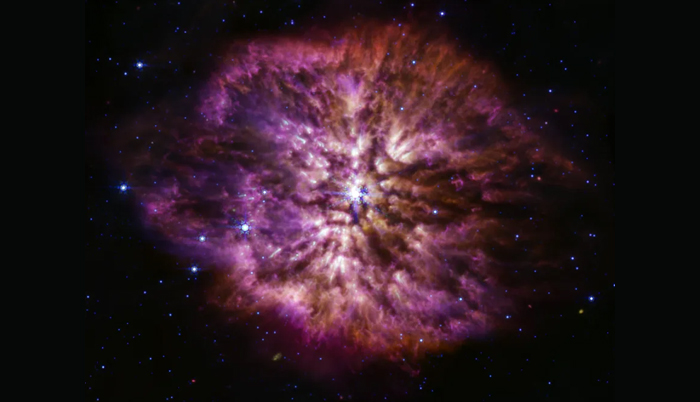![]() Home > Space & Science
Home > Space & Science
The JWST Captures A Rare Star About To Go Nova

NASA, ESA, CSA
![]() March 15th, 2023 | 11:13 AM |
March 15th, 2023 | 11:13 AM | ![]() 286 views
286 views
ENGADGET
Few stars briefly go through a Wolf-Rayet phase before exploding.
NASA has shared an image from the James Webb Space Telescope that could help astronomers one day answer longstanding questions about our universe. The capture you see above shows WR 124, a star located in the constellation Sagittarius, approximately 15,000 light years away from Earth. When the JWST first sighted WR 124 in June 2022, it captured the star undergoing a Wolf-Rayet phase. According to NASA, only some massive stars go through such a transition before they eventually explode. Those that do are among the largest and most luminous celestial bodies in the night sky. In the case of WR 124, NASA estimates the star is 30 times the mass of the Sun and has so far shed about 10 Suns worth of material. Over time, the gas Wolf-Rayet stars expel will cool and form cosmic dust.
Cosmic dust is something astronomers are keen to study for a few reasons. The material is an essential building block of the universe. As NASA notes, it shelters coalescing stars and can even come together to form planets. At the moment, however, there’s no theory that explains the amount of cosmic dust there is in the universe. The JWST could help astronomers tackle that mystery. “Before Webb, dust-loving astronomers simply did not have enough detailed information to explore questions of dust production in environments like WR 124, and whether the dust grains were large and bountiful enough to survive the supernova and become a significant contribution to the overall dust budget,” NASA said. “Now those questions can be investigated with real data.”
Source:
courtesy of ENGADGET
by Igor Bonifacic
If you have any stories or news that you would like to share with the global online community, please feel free to share it with us by contacting us directly at [email protected]